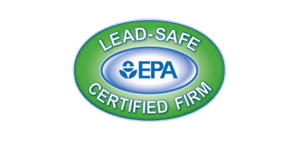Picture this: you wake up one morning to the sound of heavy rain lashing against your windows. As you pull back the curtains, you find your peaceful neighborhood transformed into a chaotic landscape. Trees sway dangerously, debris scatters across the streets, and your heart sinks as you realize the severity of the storm that has just passed through.
Experiencing the aftermath of a powerful storm can be both emotionally and physically overwhelming. The effects of storm damage can range from minor inconveniences to devastating consequences that affect your home, business, and surrounding landscapes. Understanding the intricacies of storm damage is not only crucial for identifying the signs and causes but also for navigating insurance claims and protecting your property.
Let’s delve into the world of storm damage, exploring its impact on both residential and commercial properties, as well as natural environments. Our comprehensive guide will empower you with the knowledge needed to recognize and mitigate the effects of severe weather, ensuring the security and well-being of your property and loved ones.
Key Takeaways:
- Storm damage refers to the destruction or harm caused by severe weather conditions.
- Understanding the impact of severe weather is essential in identifying signs and causes of storm damage.
- Residential areas and natural landscapes are susceptible to different types of storm damage with unique consequences.
- Being able to recognize the signs and causes of storm damage helps in implementing preventive measures and taking prompt action.
- Navigating insurance and claims for storm damage requires understanding the terms of your policy and following the necessary procedures.
Understanding the Impact of Severe Weather
Severe weather can have a profound impact on our lives and the environment. When we think of severe weather, we often picture dramatic scenes of powerful storms, hurricanes, tornadoes, and blizzards. These weather events are characterized by high winds, heavy rainfall, lightning, and sometimes even hail. The sheer force of severe weather can cause significant damage and disruption.
The consequences of severe weather can be severe, affecting both individuals and communities. One of the most evident impacts is property damage. Strong winds can tear roofs off buildings, uproot trees, and damage structures. Heavy rainfall can lead to flooding, causing water damage to homes, businesses, and infrastructure. Power outages are also common during severe weather events, leaving entire regions without electricity and disrupting essential services.
Additionally, severe weather can have a significant impact on transportation systems. High winds can lead to flight cancellations and delays, making travel difficult and dangerous. Flooded roads can render them impassable, disrupting daily commutes and emergency services. These disruptions can have far-reaching consequences, impacting the economy and people’s daily lives.
The consequences of severe weather are not limited to property damage and transportation disruptions. In some cases, severe storms can result in the loss of life. Lightning strikes, flash floods, and strong winds can be deadly, posing a serious threat to individuals caught in the midst of these weather events.
To mitigate the effects of severe weather, it is essential to understand its power and take proactive measures. This includes preparing emergency kits, securing loose items outdoors, reinforcing structures, and staying informed through weather alerts and warnings. By being prepared, we can minimize the impact of severe weather and protect ourselves and our communities.
Types of Storm Damage in Residential Areas
Residential areas are particularly vulnerable to storm damage. When severe weather strikes, it can cause various types of damages to homes. Some common signs of storm damage in residential areas include:
- Roof damage: High winds can lift shingles or cause them to become loose, leaving your home vulnerable to leaks and water damage.
- Siding damage: Strong winds and flying debris can crack or dent siding, compromising its integrity and appearance.
- Window and door damage: Impact from hail, flying debris, or strong winds can shatter windows and doors, posing safety risks and allowing water to enter the home.
- Water damage: Heavy rainfall or flooding can lead to water intrusion, causing damage to walls, ceilings, and floors.
- Tree damage: Falling tree limbs or uprooted trees can cause significant damage to roofs, windows, and other structures.
- Damage to outdoor structures: Fences and sheds are also susceptible to storm damage, particularly from high winds or falling tree limbs.
These damages can occur due to a combination of factors, including high winds, heavy rainfall, lightning strikes, falling tree limbs, or flying debris. Identifying signs of storm damage in residential properties is crucial in taking prompt action to prevent further deterioration and addressing the underlying causes of the damage.
Evaluating Storm Damage on Natural Landscapes
Storms can have a significant impact on natural landscapes, causing damage to the environment and disrupting ecosystems. High winds have the potential to uproot trees, break branches, and damage vegetation, altering the visual appeal of an area. The effects of heavy rainfalls include soil erosion, flooding, and waterlogging, which can harm plant life and lead to ecological imbalances. Additionally, lightning strikes during storms can ignite wildfires, devastating forests and other natural habitats.
Evaluating storm damage on natural landscapes is crucial for conservation efforts and restoring the environment. By assessing the extent of the damage, experts can determine the appropriate steps to take in terms of restoration and preservation. Through careful evaluation, natural landscapes can recover and thrive, ensuring the long-term sustainability of the ecosystem.
“What Is Storm Damage?”: Identifying Signs and Causes
Identifying signs of storm damage is crucial in assessing the condition of your property and determining the necessary repairs. By recognizing the indicators of storm damage, you can take prompt action to mitigate further harm and secure the safety of your property.
Some common signs of storm damage include:
- Roof leaks
- Missing shingles
- Cracked or broken windows
- Water stains on walls or ceilings
- Fallen or damaged trees or branches
- Standing water or flooding
The causes of storm damage can vary depending on the type of weather event. Some primary causes include:
- High winds
- Heavy rainfall
- Lightning strikes
- Hail
- Flying debris
Understanding the signs and causes of storm damage enables you to implement preventive measures and facilitates the decision-making process when it comes to necessary repairs and restoration. By promptly addressing storm damage, you can minimize potential risks and protect the value of your property.
Commercial and Industrial Consequences of Storms
Storms can have severe consequences for commercial and industrial properties. Strong winds can damage roofs, windows, and signage, posing safety risks for employees and customers. Flooding and water damage can disrupt business operations and destroy valuable equipment or inventory. Power outages caused by storms can lead to business interruption and financial losses. It’s crucial for businesses to have emergency preparedness plans in place to minimize the impact of storms and ensure the safety of employees and customers.
Storm Damage versus Other Weather-Related Incidents
When it comes to comparing storm damage and other weather-related incidents, there are significant differences in terms of intensity and causes. Storm damage primarily results from severe weather events such as storms, hurricanes, or tornadoes. On the other hand, other weather incidents encompass more common occurrences like normal rainfall, mild winds, or moderate temperature changes.
Storm damage can lead to substantial destruction and necessitate extensive repairs, whereas other weather incidents typically pose minimal risks and may have temporary effects. Understanding this distinction is crucial in accurately assessing the extent of damage and determining appropriate actions.
Recognizing the difference between storm damage and other weather-related incidents empowers you to make informed decisions about property maintenance and mitigation strategies. By understanding the unique characteristics of storm damage, you can better protect your property and minimize the consequences of severe weather events.
Navigating Insurance and Claims for Storm Damage
Navigating insurance and claims for storm damage can be a complex process. It’s important to understand the terms of your insurance policy and the coverage it provides for storm damage. Documenting the damage, filing a claim promptly, and providing necessary evidence are crucial steps in the claims process. Working with insurance adjusters and contractors can help in estimating the costs of repairs and negotiating settlements. Being aware of the specific requirements and procedures for storm damage insurance claims ensures a smoother process and maximizes your chances of receiving fair compensation.
When it comes to storm damage, having the right insurance coverage is essential. Your policy should clearly outline what is covered and what is not in the event of storm damage. It’s important to review your policy and understand the limits, deductibles, and exclusions related to storm damage. This will help you know what to expect when filing a claim.
After a storm, documenting the damage is crucial for your insurance claim. Take detailed photos or videos of the affected areas and items. This evidence will serve as proof of the storm damage and help support your claim.
Filing a claim promptly is important to ensure a smooth process. Contact your insurance provider as soon as possible after the storm to initiate the claims process. Provide all necessary information and documentation requested by your insurance company to avoid delays.
Working with insurance adjusters and contractors can be beneficial in estimating the costs of repairs and negotiating settlements. Insurance adjusters will assess the damage and determine the amount of coverage you are entitled to. It’s important to communicate openly and provide any additional information or evidence they may require.
Understanding the specific requirements and procedures for storm damage insurance claims is crucial. Each insurance company may have different guidelines, so it’s important to familiarize yourself with their process. This will help you navigate the claims process more effectively and increase your chances of receiving fair compensation.
Remember, navigating insurance and claims for storm damage can be complex, but being proactive, documenting the damage, and understanding the process will help you navigate it more smoothly and ensure you receive the coverage you’re entitled to.
Conclusion
In conclusion, storm damage poses a significant threat to both residential and commercial properties. It is important to understand the impact of severe weather conditions and be able to identify signs and causes of storm damage. By being prepared and taking necessary precautions, individuals and businesses can mitigate the potential consequences of severe weather events.
Evaluating storm damage on natural landscapes is also crucial for conservation efforts and restoring the environment. Understanding the damage caused by storms helps in implementing effective strategies to protect our natural habitats and maintain ecological balance.
It is important to note that storm damage differs from other weather-related incidents in terms of intensity and specific causes. While other weather incidents may have minimal risks and temporary effects, storm damage can result in significant destruction and require extensive repairs.
Navigating insurance and claims for storm damage can be complex, but it is essential for receiving fair compensation. Being aware of the terms of your insurance policy, documenting the damage accurately, and following the necessary procedures will help in maximizing your chances of a successful claim.
In summary, by understanding the various aspects of storm damage and taking appropriate measures, individuals and businesses can minimize the impact of severe weather events and protect their properties effectively. Stay informed, be prepared, and take action to safeguard against storm damage.
FAQ
What is storm damage?
Storm damage refers to the destruction or harm caused by severe weather conditions, such as storms, hurricanes, tornadoes, or heavy rainfalls. It can affect both residential and commercial properties, as well as natural landscapes.
What is the impact of severe weather?
Severe weather can cause significant damage and disruption, including property damage, power outages, transportation disruptions, and even loss of life. Severe weather events include storms, hurricanes, tornadoes, and blizzards, characterized by high winds, heavy rainfall, lightning, and hail.
What are common types of storm damage in residential areas?
Common types of storm damage in residential areas include roof damage, siding damage, window and door damage, water damage from leaks or flooding, tree damage, and damage to outdoor structures like fences and sheds.
How does a storm impact natural landscapes?
Storms can uproot trees, break branches, cause soil erosion, flooding, and waterlogging. Lightning strikes can start wildfires, which can devastate forests and other natural habitats, affecting the visual appeal and disrupting ecosystems.
How can I identify signs and causes of storm damage?
Signs of storm damage can include roof leaks, missing shingles, cracked or broken windows, water stains, fallen or damaged trees or branches, and standing water or flooding. Primary causes of storm damage can be high winds, heavy rainfall, lightning strikes, hail, and flying debris.
How do storms impact commercial and industrial properties?
Storms can damage roofs, windows, signage, and equipment, posing safety risks for employees and customers. Flooding and power outages can disrupt business operations, leading to financial losses.
What differentiates storm damage from other weather-related incidents?
Storm damage is caused by severe weather events like storms, hurricanes, or tornadoes, while other weather incidents include normal rainfall, mild winds, or moderate temperature changes. Storm damage can be more intense and require extensive repairs.
How can I navigate insurance and claims for storm damage?
Understand your insurance policy, document the damage, file a claim promptly, provide necessary evidence, and work with adjusters and contractors to estimate costs and negotiate settlements.
How can I protect my property from storm damage?
Being aware of the signs and causes of storm damage, implementing preventive measures, and having an emergency preparedness plan in place can help minimize the impact of storms and protect your property.



